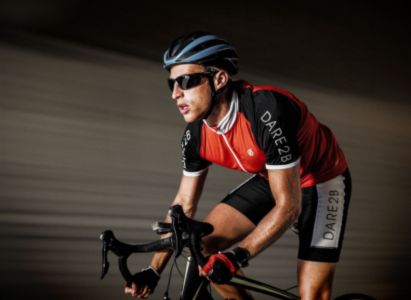
What To Wear Cycling in Winter
Planning on cycling during the colder months? Whether you're commuting to work or keeping fit, you'll struggle to brave the cold if you're wearing your usual summer cycling gear. In winter, it's all about wrapping up warm in layers. It's also wise to put some mud guards on your bike throughout the colder months, as you can expect conditions to be much wetter and muddier, and you don't want murky water kicking up off your tyres and onto your clothes. This post is part of our 'what to wear cycling' series, where you'll discover all of our cycling clothing recommendations for all conditions.
Cycling in Winter: What to Wear
A decent cycling jacket is an essential outer layer to wear throughout the winter. It'll help you out in the event of any rain, as well as keep you nice and insulated. Most of our jackets here at Dare 2b also feature some breathability in order to let out any built-up sweat, so you'll still be able to maintain a good level of comfort.
If you usually cycle on your commute home after work, chances are it'll be darker from 4pm onwards, so it's wise to find a cycling jacket which has some reflective detailing on it in order to keep you visible to nearby motorists.
Cycling jerseys are always the standard go-to cycling top. With it being cold outside, you'll want to opt for a long sleeve jersey instead of your usual short sleeve, as whilst you'll be wearing a jacket over the top, the cold will eventually transfer through the jacket sleeves and be left touching directly on to your skin.
If you don't fancy buying a long sleeve cycling jersey, another option is to combine some of the clothing you may already have, such as a short sleeve cycling top and a long sleeve base layer. Base layers often already include similar technical elements that cycling gear has, such as fast sweat-wicking, antibacterial properties and quick-drying fabrics.
Once again you'll be wanting to go for the long-length option which means a pair of cycling trousers or tights, unless you feel like braving the cold in your cycling shorts. Of course, you'll build up some heat over the course of your ride so there is some degree of personal preference involved here - choose which ever you think you'll feel more comfortable in.
A comfy pair of cycling gloves can help provide some warmth for your hands, but really they're for maintaining good grip and balance which is more important in the colder months, given that certain parts of the road may be much more slippery than usual and the roads will be more prone to pothole damage, which will keep you on your toes.
Wool clothing and exercise typically aren't mixed, as wool is a natural insulator and offers very poor breathability, resulting in sweat build-up. However, it's fantastic at keeping the heat in, so sweaty feet is a worthy compromise to keep your toes nice and toasty at this time of the year.
With the rest of your body suitably covered, all that's really left is the few remaining gaps, such as between your neck, your ears and the air holes in your helmet. A snood will help protect your neck from letting the cold in, whilst a suitable hat will help insulate your head, so long as it fits comfortably under your helmet.
Other Winter Cycling Tips
If you're going to be riding out in the cold and wet for the foreseeable future, remember to maintain your bike. That includes cleaning the frame of your bike and keeping an eye on the chain, along with having the right tyres with ample tread still on them.
Before setting off on your way, do a few sharp manoeuvres on your street to get a feel for the road conditions (as chances are the roads will be much worse for wear in terms of potholes over the winter) and whether they're icy or not. It's also a good time to test your brakes, so you're aware of how fast you can stop in an emergency.
If you're cycling on a main road, try to avoid grids where possible, as water will collect at the roadside along them and freeze overnight, posing a significant hazard to an unsuspecting cyclist. Equally, on country lanes you should be mindful of your route, as the unkempt nature of them often leads to deep puddles at the bottom of bridges / elevations, so don't travel too quickly when you know a hill is coming up - slow down just before so that you have time to react in case of a hazard.
